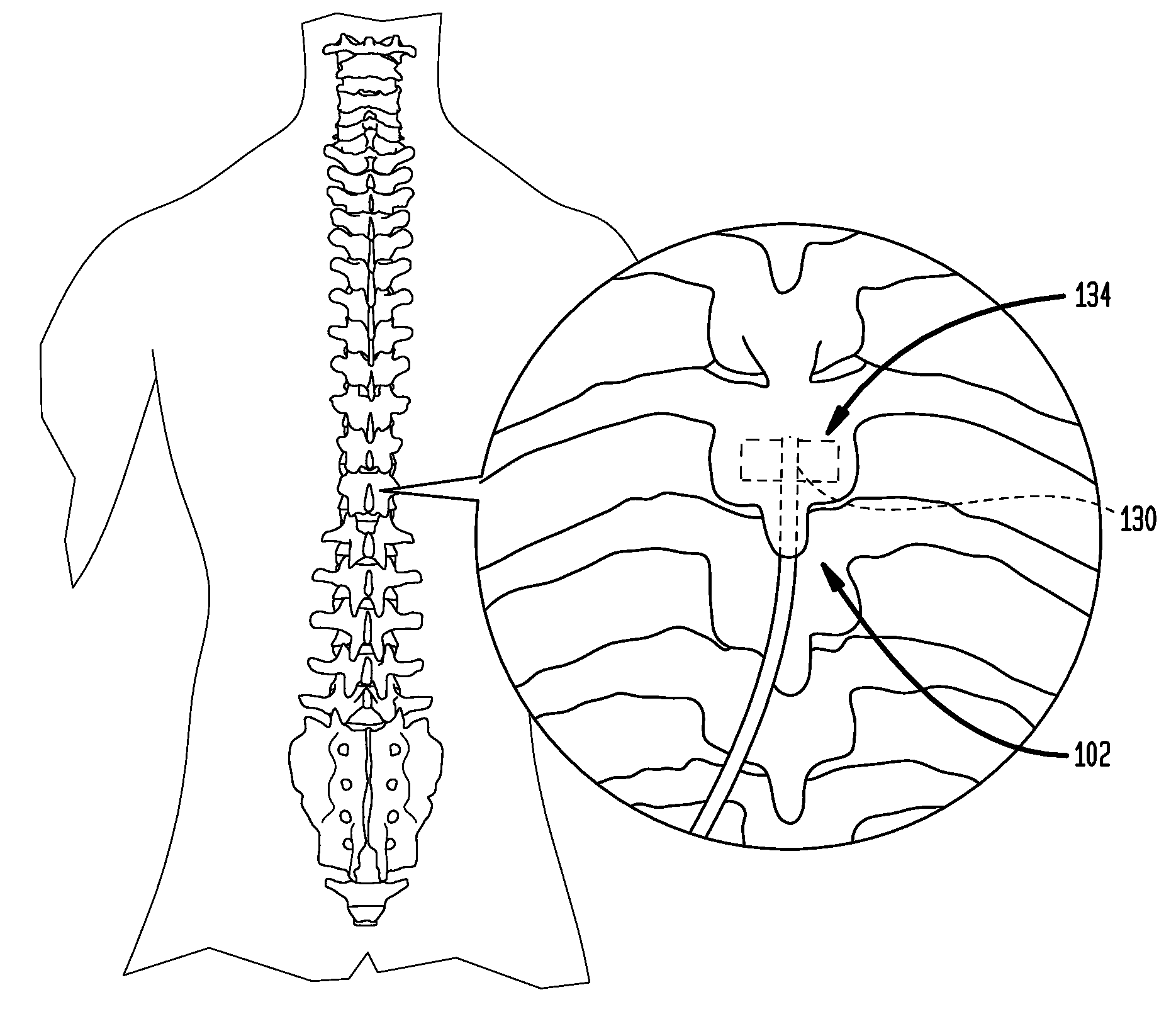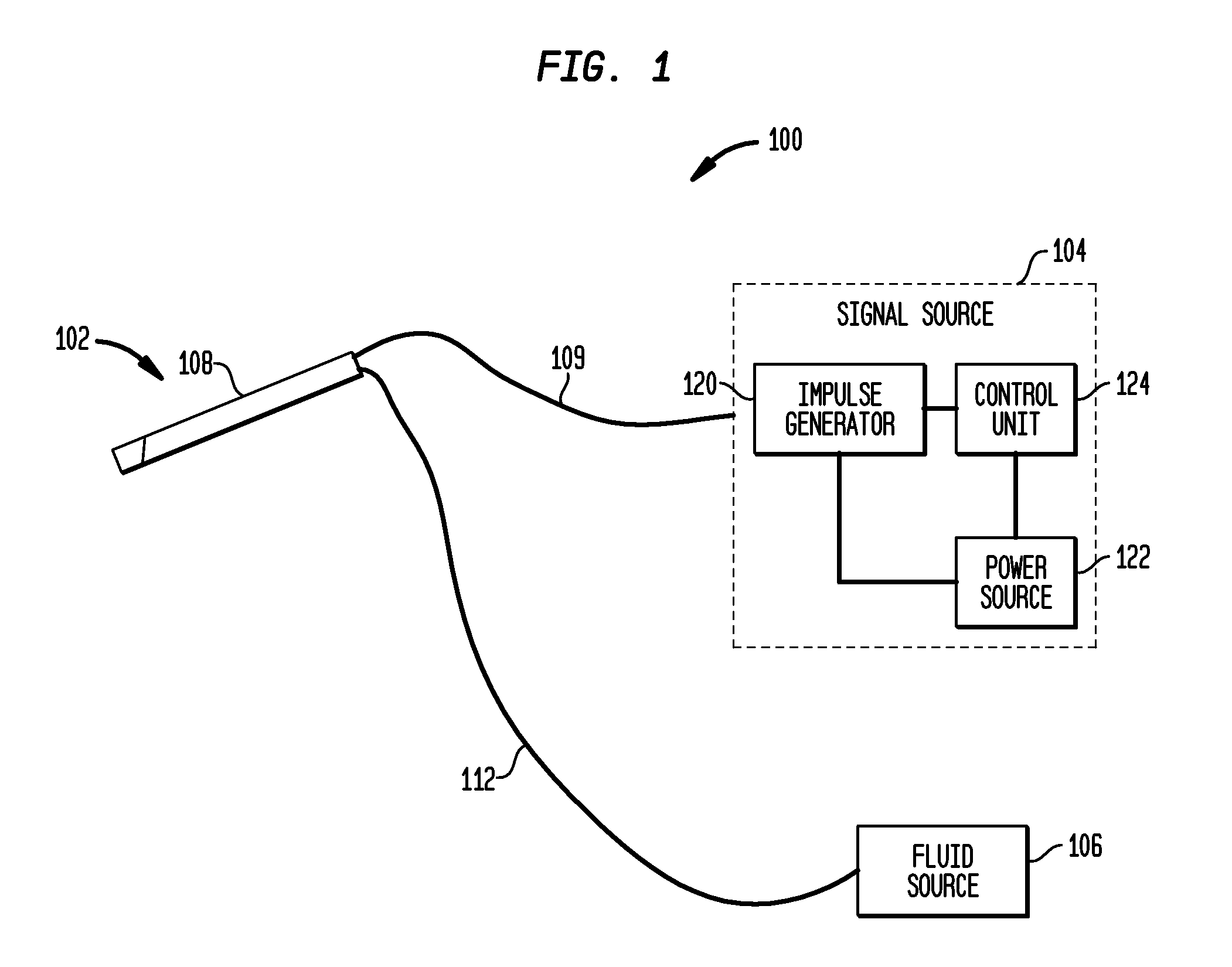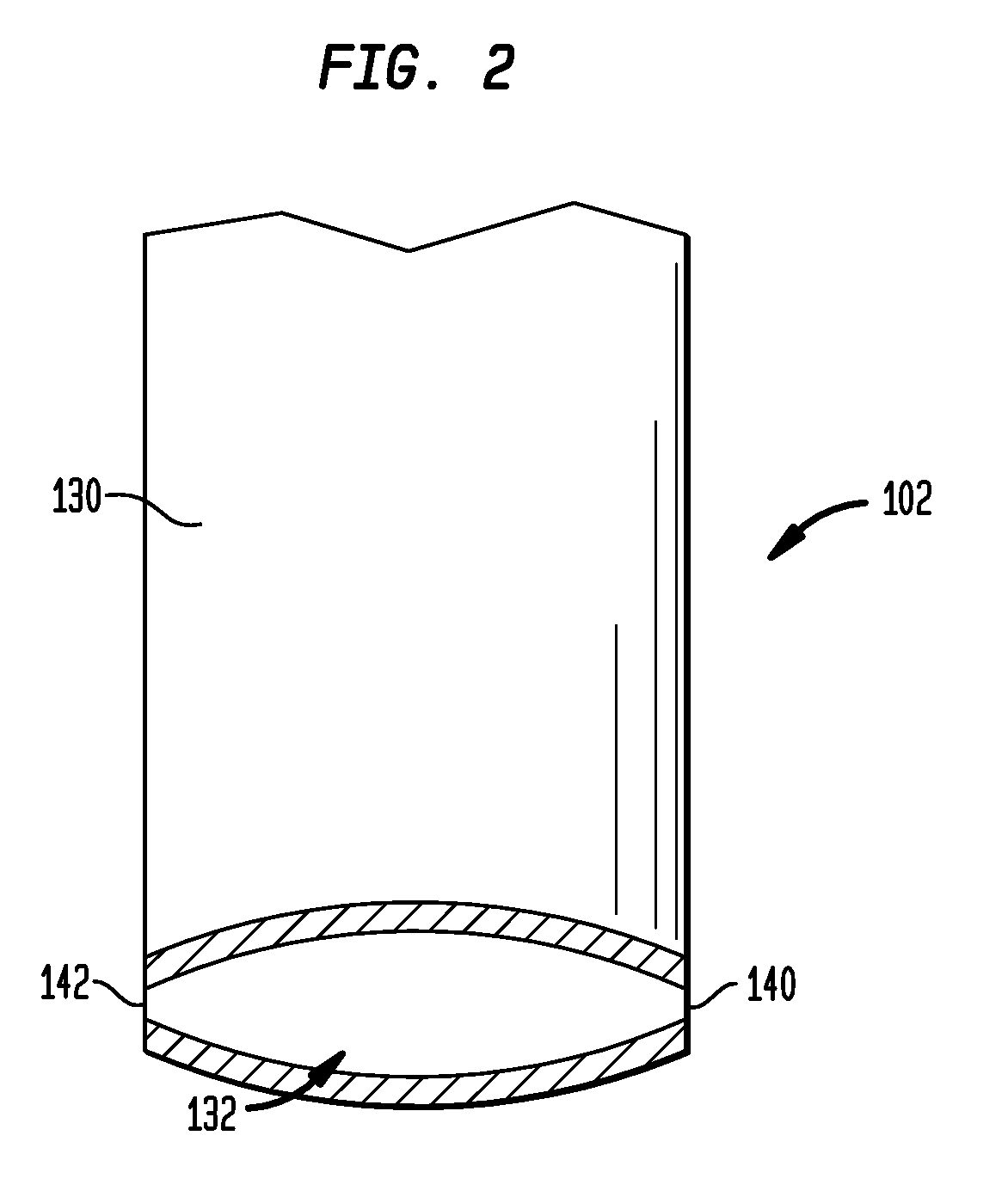Methods and apparatus for spinal cord stimulation using expandable electrode
a technology of expandable electrodes and electrodes, which is applied in the direction of balloon catheters, other medical devices, and therapy, etc., can solve the problems of limited design of lead structures that may be incorporated into percutaneous leads, the half of each electrode facing away from the tissue of interest, and not being very useful in delivering therapeutic currents. , to achieve the effect of reducing pain, reducing damage to surrounding tissue, and increasing intestinal and/or gastric motility
- Summary
- Abstract
- Description
- Claims
- Application Information
AI Technical Summary
Benefits of technology
Problems solved by technology
Method used
Image
Examples
Embodiment Construction
[0030]In the present invention, electrical energy is applied to one or more electrodes to deliver an electromagnetic field to a patient. The invention is particularly useful for applying electrical impulses that interact with the signals of one or more nerves, or muscles to achieve a therapeutic result, such as treating ischemic heart disease—refractory angina pectoris, low back pain with radiculopathy, failed-back surgery syndrome (FBSS), abdominal pain, peripheral vascular disease, complex regional pain syndrome, treating ileus conditions, IBS, and / or any other ailment affected by nerve transmissions. For convenience, the remaining disclosure will be directed specifically to the treatment of nerves within the spinal cord with a device introduced through a percutaneous penetration in the patient, but it will be appreciated by those skilled in the art that the systems and methods of the present invention can be applied equally well to other tissues and nerves of the body, including ...
PUM
 Login to View More
Login to View More Abstract
Description
Claims
Application Information
 Login to View More
Login to View More - R&D
- Intellectual Property
- Life Sciences
- Materials
- Tech Scout
- Unparalleled Data Quality
- Higher Quality Content
- 60% Fewer Hallucinations
Browse by: Latest US Patents, China's latest patents, Technical Efficacy Thesaurus, Application Domain, Technology Topic, Popular Technical Reports.
© 2025 PatSnap. All rights reserved.Legal|Privacy policy|Modern Slavery Act Transparency Statement|Sitemap|About US| Contact US: help@patsnap.com



